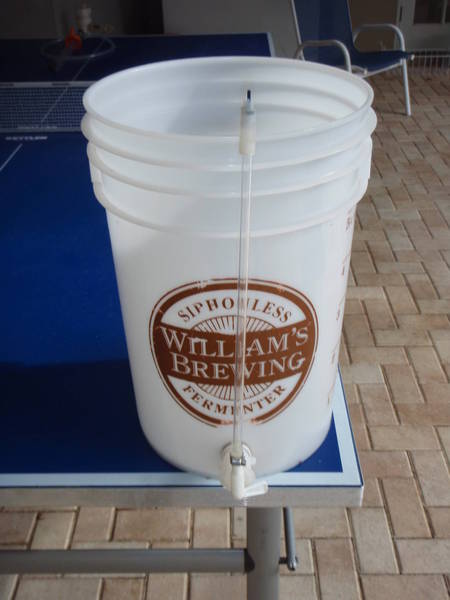I had sword off bottling since the spring time, but now I need to start doing it again since I want to make bigger beers that require lots of time to condition.
One of the many reasons that I stopped was that my bottled beers often had off flavors that hadn't existed after primary and/or secondary. I still don't know why (temp control is the most likely culprit) but perhaps it was due to bacteria in my bottling bucket.
Regardless, here are my problems with bottling buckets:
1. plastic
2. difficult to get every last drop of beer out
3. does not properly mix sugar for carbing without stirring which would oxygenate the beer
You might think I'm wrong with number 3, but I'm referring to times when I use schnapps, extracts or other sugars that are really heavy. I bottled a batch where half the bottles tasted disgusting (too much schnapps, safale-05 couldn't handle it so residual sugar remained) and half tasted excellent.
Anyone have any alternative or solution to these problems?
One of the many reasons that I stopped was that my bottled beers often had off flavors that hadn't existed after primary and/or secondary. I still don't know why (temp control is the most likely culprit) but perhaps it was due to bacteria in my bottling bucket.
Regardless, here are my problems with bottling buckets:
1. plastic
2. difficult to get every last drop of beer out
3. does not properly mix sugar for carbing without stirring which would oxygenate the beer
You might think I'm wrong with number 3, but I'm referring to times when I use schnapps, extracts or other sugars that are really heavy. I bottled a batch where half the bottles tasted disgusting (too much schnapps, safale-05 couldn't handle it so residual sugar remained) and half tasted excellent.
Anyone have any alternative or solution to these problems?














































![Craft A Brew - Safale S-04 Dry Yeast - Fermentis - English Ale Dry Yeast - For English and American Ales and Hard Apple Ciders - Ingredients for Home Brewing - Beer Making Supplies - [1 Pack]](https://m.media-amazon.com/images/I/41fVGNh6JfL._SL500_.jpg)














